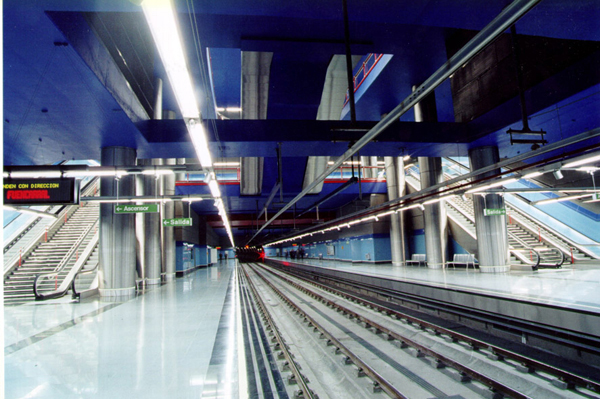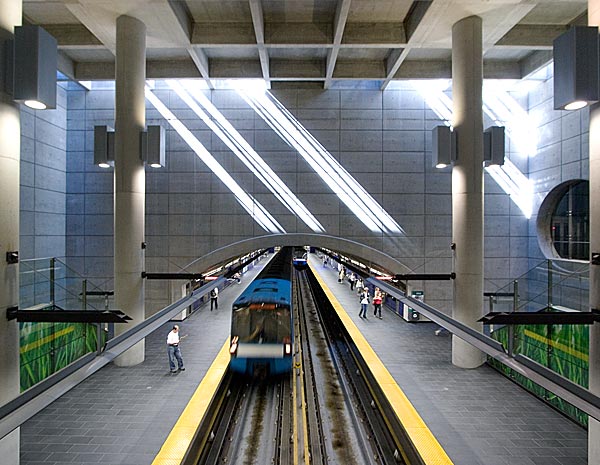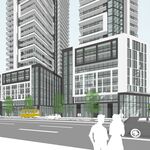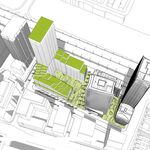This post is shared with the blog Transit Futures.
Nearly every North American who travels to Europe returns with awe at the extent of their subway and intercity rail networks. Part of the explanation for their vastly more impressive infrastructure is greater investment, but another large part comes from a cost of construction that is often a fraction of that in many cities on this side of the Atlantic. The Province of Ontario has invested an unprecedented amount of money in transit as part of its MoveOntario 2020 program, but Toronto is getting far less than other cities have built with similar funding. Transit capital costs have been rising at multiples of consumer price inflation for decades and if that course continues, major transit projects will become unaffordable no matter how generous the government of the day.
The Inflation Problem
The existing Sheppard subway was criticized at the time for its high cost relative to previous projects. The 5.5km line opened in 2002 and cost less than $1 billion including a complex interchange at Yonge. Rob Ford’s recently proposed plan to complete the line from Downsview to Scarborough Centre would add 12.7 km of tunnel for a cost estimated by the TTC at $4.7 billion. That is an increase from $172 million per kilometre on the original project to $370 million projected for the current extension project, not including the seemingly inevitable escalations once detailed planning and construction begin. If subway construction costs had been held to CPI inflation, construction today should cost $221 million per kilometre.
The comparison with CPI inflation is not entirely fair, as various elements of construction, particularly energy intensive materials like concrete, have seen significant price increases. Nevertheless, continuing on a path of steady increases far above CPI inflation is not sustainable. The recent project’s planning studies alone were expected to cost $250 million to $300 million, close to a third the cost of the entire original Sheppard project, before a single shovel hits the dirt.
International Comparisons
Subway construction costs differ to a remarkable degree between cities, even within countries or economic areas. Torontonians searching for a city that spends more than their own need to look no further than New York, which holds the dubious distinction of most expensive construction costs in the world. The tiny 2.4km Second Avenue subway project is costing more than $4.5 billion, or $1.875 billion per kilometre. Many reasons have been cited, ranging from the catch-all of New York’s "uniqueness" to unusually difficult construction conditions. More probable explanations include byzantine union work rules and even the open secret of Mafia involvement in the New York construction industry. But just because New York does it worse than Toronto doesn’t mean that many cities don’t do it better.
The most often cited example of cheap subway construction is Spain. The most recent Madrid Metro extension cost $84 million per kilometre. There are differences from the Toronto subway, including single tunnel bores and somewhat smaller trains, but the differences are not fundamental to the operation of the system and certainly do not justify a four-fold difference in cost. Lest readers question whether passengers are forced to board trains in dank caves, many Spanish subway stations were designed by celebrated international architects, including Norman Foster. It is not decoration and design that add significantly to the cost of a station. Instead, it is the choice to build deep caverns and vast mezzanines, along with project management and other ancillary costs. Though not a subway tunnel, Barcelona was able to build a 5.8km high-speed rail tunnel running directly beneath the streets of the city centre, including a complex underpinning of Gaudi's Sagrada Familia, for €179.3 million (C$222 million).
 A Madrid Metro station. Source: FCC Construction
A Madrid Metro station. Source: FCC Construction
Other cities are more expensive than Madrid and Barcelona, but they are still far more economical than Toronto. The U5 extension in Berlin, for example, is costing about C$242 million per kilometre despite being built around multiple existing routes and through the most densely built part of the city, a far more challenging setting than Sheppard or Vaughan. The Paris Metro Line 14, opened between 1998 and 2003, was also built through the historic heart of the city; it cost about $173 million per kilometre.
We do not have to go to Europe to see substantial cost differences. The Montreal Metro extension to Laval was built from 2002 to 2007 and cost $143.2 million per kilometre, including a river crossing and fairly lavish stations. Though its trains are somewhat smaller, that difference surely doesn't justify a doubling of costs down the 401. The Canada Line in Vancouver cost $107.9 million per kilometre. It is fully grade separated and automated, the majority of the line is underground, and it includes two major water crossings. By contrast, the Eglinton Crosstown line is only partially grade-separated, including long sections where it is little more than dedicated lanes in the middle of the street. Despite its substantially lower standard of construction, it is costing more than two-and-a-half times as much per kilometre.
 De la Concorde Station, Montreal Metro. Source: IBI Group.
De la Concorde Station, Montreal Metro. Source: IBI Group.
Potential Savings
The Canada Line is an excellent example of a completely different approach to rapid transit construction. Rather than being managed by the local transit organization, which may or may not have recent experience with similar major projects, it was built in by a private consortium with substantial international experience that consortium designed, built, and continues to operate the line. It was a successful example of a public-private partnership (many are not so successful), particularly because the private partner was responsible for most cost increases and was therefore very inclined to limit costs.
Some cost reductions are not without impact. The most infamous case in Vancouver was the long underground section along Cambie Street. The businesses on the street suffered for several years as the street was dug up using the somewhat more disruptive, but significantly cheaper, cut-and-cover method of construction. This was the method used to build the original Yonge and Bloor lines, but it has since fallen out of favour in this city. While a long section of dug-up street could be very harmful to the many businesses along the street in the downtown core, it would be much less problematic on many of Toronto’s broad suburban streets. A possible mitigation effort would be to develop better compensation arrangements in advance that would sustain businesses for the duration of construction.
In suburban Richmond, the Canada Line is elevated. This is another approach that was frequently used in earlier decades in Toronto, but has since been almost completely shunned. The York-Vaughan subway extension is a perfect example. The TTC is using expensive tunnel boring machines to dig deep tunnels under largely empty land. Certainly the section north of Steeles could have been built above ground for a massive cost saving. Many suburban business centres, like Scarborough Centre and Metrotown in Burnaby, are built around elevated transit lines. If the buildings were designed from the outset to accommodate elevated rapid transit, there is no reason why it should have been detrimental to the new Vaughan Metropolitan Centre. In fact, an elevated alignment was briefly examined in the TTC’s study, but it refused to consider an above-ground VCC station and therefore dismissed the resulting grades as inconvenient for operations. The study did not even include a cost estimate so that the savings could be balanced against the costs. The Sheppard extension to Scarborough is another place where a partially elevated alignment could result in substantial economies.
Elevated lines are out of the question on pedestrian-oriented downtown streets, but many of Toronto’s suburban arterials simply do not fit that description. Many are lined with the back fences of homes or distant set back buildings. They would see minimal aesthetic impact from an elevated line.
 A Canada Line elevated section. Source: 24h Vancouver
A Canada Line elevated section. Source: 24h Vancouver
This is a subject that I will be returning to in much greater detail in the future. Doing a detailed examination of why Toronto’s costs are so much higher than those in other major developed-world cities would require detailed analysis of major project budgets, a task that would require a team of experts. Toronto’s current mayor prides himself on his penny-pinching reputation. This is a place where real action on cost control could make a major difference, both to the city’s budget and, more importantly, to the possibility of further rapid transit construction in the future. Instead of taking cost estimates at face value, governments and citizens must seriously examine why they have risen so rapidly and whether they can be reduced.

 3.8K
3.8K 










































